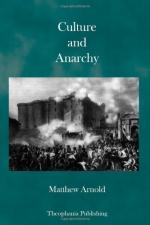|
This section contains 8,776 words (approx. 30 pages at 300 words per page) |

|
SOURCE: Harris, Wendell V. “Interpretive Historicism: ‘Signs of the Times’ and Culture and Anarchy in Their Contexts.” Nineteenth-Century Literature 44, no. 4 (March 1990): 441-64.
In the following essay, Harris compares Thomas Carlyle's “Signs of the Times” with Arnold's Culture and Anarchy, concluding that Arnold's societal solutions are much more radical.
To adapt Northrop Frye's metaphor, Carlyle's stock has been steadily falling. To the contemporary reader his works are likely to look like mere rhetorical steam—at high pressure, but vaporous nonetheless—becoming substantial only when politically ominous. That Carlyle created the role of the Victorian sage is generally acknowledged, but the attribution can seem an indictment as well as a tribute. At the same time, while Matthew Arnold seems as much in the critical eye as ever, he has become a name for masked social elitism and political conservatism. The argument I want to make is that, when viewed against...
|
This section contains 8,776 words (approx. 30 pages at 300 words per page) |

|


